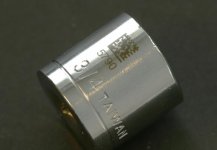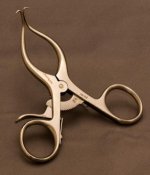RJT
Titanium
- Joined
- Aug 24, 2006
- Location
- greensboro,northcarolina
We do a lot of engraving on our VMC's for part numbers, lot numbers, vendor identification etc. We have had some parts laser etched (subcontracted) usually around $2. each in lots of 100 when engraving was impractical. We are seriously thinking of buying a marking laser, but don't know about operating costs and possible limitations. Not the trophy shop desktop models, but a Yag laser for part marking. Anyone have one that would care to enlighten me? I'm thinking around 20K to get into one, but what does it cost to run, any expensive consumables?







